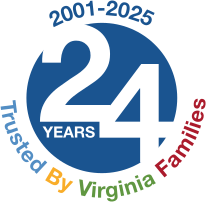Have you ever avoided introducing a friend to someone you vaguely know because you are scared that you’ll call them the wrong name? Or decided not to go to a gathering because you’re nervous you won’t have many people to talk to? What about going on a date and not knowing who should pay?
It can be human nature to want to avoid situations in which we aren’t exactly sure how to act. No one wants to offend someone or hurt their feelings. However, there are many situations in which avoiding interactions can lead to missed connections or foster feelings of isolation. This can be true when interacting with all different types of people, including individuals with disabilities. We want to use this space to openly discuss ways to interact with individuals who have a disability to promote an inclusive environment for everyone.
How to Refer to a Person with a Disability
When referring to a person with a disability, you can use person-first language such as “an individual with a disability” or identity-first language such as “disabled person.” In general, we tend to default to person-first language, however, it is important to recognize that, when you’re interacting with a person who may have a disability, they are a multi-faceted person. Some individuals recognize their disability as an integral part of their identity, while others may feel it is more a small part of who they are. This can impact the way they would like to be referred. When in doubt, ask about their preference.
How to Interact with Someone Who Has a Disability
Do not ask intrusive questions such as “How did you get your injury?” or use sensationalizing language such as “Wow, you are so brave for getting out of bed this morning!” Individuals with disabilities are individuals. Treat them just as you would any other human. Offer to shake their hand, make eye contact, and use proper titles. If they are unable to shake hands or not comfortable doing so, they will often offer an interaction that they are comfortable with. And if you happen to make a mistake, apologize, and use it as a learning experience.
How to Help Someone with a Disability
If you are ever in a situation where you think someone with a disability might need your help, keep these things in mind. You should always ask someone if they need help and ask them specifically HOW you can help. Oftentimes those with disabilities know exactly what they need, so take instruction without deviation or offense to how it might be delivered. Additionally, if an individual’s disability means they use an assistive device, do not touch or lean on it without their permission. This is often seen as an extension of their body, and doing so is an invasion of personal space.
How to Schedule an Inclusive Get-Together
When planning a get-together, think about what aspects would lend to a more inclusive environment. Ask questions such as:
- Does the planned location have an easily accessible entrance and bathroom?
- Is the space large enough or well-lit enough for safe mobility?
- Is there accessible parking, and if parking is far from the event, are there places to rest along the way?
- Is the proposed activity able to be performed by all?
The aspects you will need to consider can be impacted by the type of disability the individual may have, so take a few extra minutes to do your research on what you may need to take into account, which could be as simple as asking the individual themselves for their input!
All this being said, make the extra effort to interact rather than avoid. If you make a mistake, use it as a learning experience, and consider how you would want to be treated in a similar situation. Look at these new situations as opportunities to learn and grow for future situations.
This article was written by Monni Morrow PT, DPT and Lillie Neal, OTD, OTR/L
Sheltering Arms Physical Rehabilitation Centers offer a network of comprehensive rehabilitation and support services in Central Virginia.
